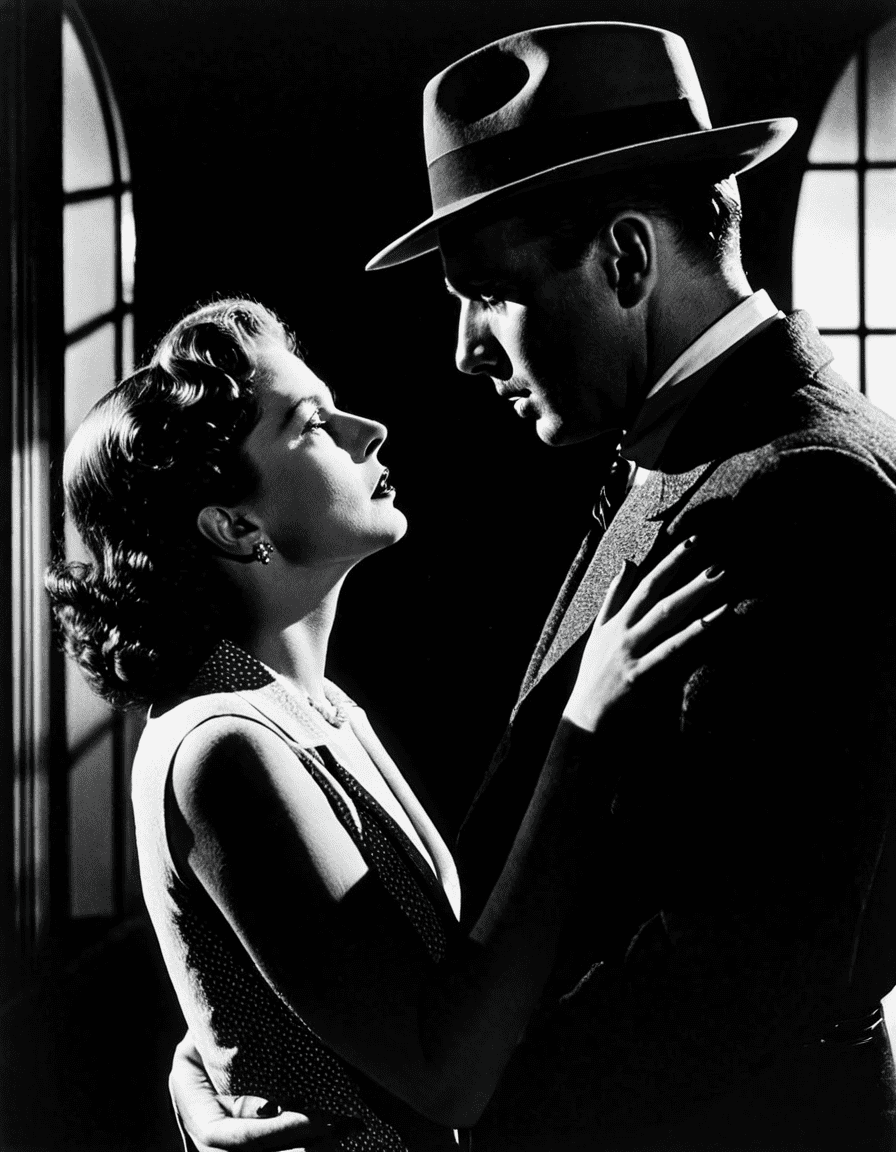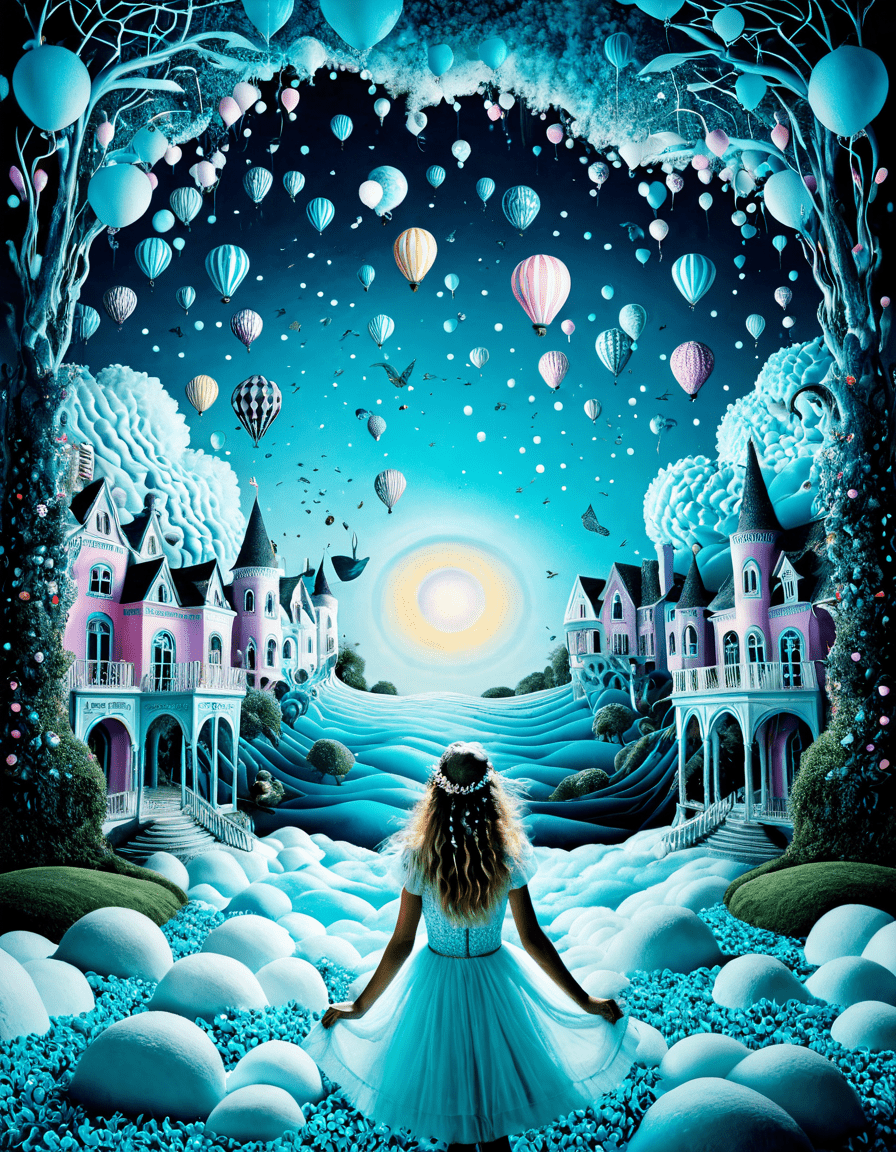When we discuss hysteria, we often picture vivid scenes from history—think witch trials, Cold War paranoia, or the latest viral panic. Hysteria isn’t just some relic of the past; it’s a haunting current that pulses through the veins of society, shaping the way we understand ourselves and each other. Throughout history, waves of hysteria have emerged, morphing societies into interesting landscapes of fear and response. So, let’s dive into this fascinating subject and see how these historical episodes inform our cinematic narratives and culture today.

The Historical Context of Hysteria: Understanding the Waves of Paranoia
1. A Cycle of Fear Deriving from Hysteria
In the grand tapestry of history, hysteria threads itself through various episodes, each time wielding a unique power that transforms social norms. Early examples like the witch hunts highlight how collective anxiety can turn ordinary folks into scapegoats, birthing tragedies steeped in a thick atmosphere of fear. The Salem Witch Trials of 1692 shocked many, showing just how fragile the line between reason and madness can be.
Fast forward to the Red Scare of the 1950s, a time when the fear of communism gripped America like a vice. Families were torn apart, careers were destroyed, and lives shattered based on whispers and suspicions. It’s an example of how hysteria can turn the everyday into a battleground of paranoia, leading people to become unwitting participants in societal chaos.
2. The Weight of History and Hysteria’s Lessons
These events remind us that hysteria doesn’t just disappear; it cycles back through history, shaking the foundations of our morality. From the witch hunts to McCarthyism, we see that the human experience is often paved with episodes of mass paranoia. Each time, society reflects on these events, sometimes learning, but sometimes repeating the same mistakes. Hysteria becomes a catalyst for change, albeit often at a high cost.
As we navigate this emotional and historical landscape, it’s clear that contemporary hysteria, fueled by social media and misinformation, mirrors these earlier periods. The old adage that those who forget history are doomed to repeat it rings truer than ever.

Top 7 Defining Moments of Hysteria That Shaped Society
1. The Salem Witch Trials (1692)
The infamous Salem Witch Trials stand as a dramatic illustration of hysteria. Those dark days saw 20 people put to death based on little more than unfounded allegations and collective dread. This mass witch hunt wasn’t merely a local occurrence but rather a reflection of the broader societal fears—fear of the unknown, of women stepping out of line, and of inexplicable misfortunes. The trials serve as a grim reminder of how paranoia can distort justice.
2. The Spanish Flu and the Rise of Mask Hysteria (1918)
When the Spanish Flu swept across the globe, it wasn’t merely a health crisis; it sparked a wave of hysteria around safety and protection. Mask mandates became a hot-button issue, leading to a cultural trope of public health paranoia. Fast forward to today, and the masks evoke echoes of that fearful past, reminding us of how hysteria can echo through generations, leaving lingering concerns about health and safety.
3. McCarthyism: Hysteria and Paranoia in Cold War America (1950s)
During the 1950s, fear permeated through every crevice of American life, leading to rampant hysteria over communism. The Red Scare exemplified how paranoia could fuel investigations, leading to ruined lives. Many careers ended abruptly due to unfounded accusations, highlighting the dangers of mass hysteria. It’s a cautionary tale that mirrors some present-day investigative tendencies in media.
4. The ‘Satanic Panic’ of the 1980s
The 1980s brought us the ‘Satanic Panic,’ where hysteria surged around allegations of ritual abuse. Media sensationalism turned children’s daycares into potential sites of horror, with panic spreading like wildfire. This period highlights how both hysteria and media can create social distances blurring truth and myth, leading to societal repercussions that linger for decades.
5. The Rise of Anti-Vaccine Movements
The modern anti-vaccine movement serves as a quintessential example of hysteria rooted in fear and misinformation. Spurred by misleading studies, this wave of paranoia has led to hesitant parents and a resurgence of diseases once considered eradicated. The implications are staggering, showcasing how hysteria affects public health and societal well-being.
6. The War on Drugs: Hysteria and Policy
The War on Drugs in the 1980s illustrates how hysteria can spawn draconian policies that disproportionately affect marginalized communities. Fueled by societal fears about drug use, policies were enacted without much consideration for justice or rehabilitation. This hysteria laid bare the systemic injustices that continue to impact society today.
7. Climate Change Denial: The Hysteria of Dismissal
In the present day, the debate on climate change often sees a bizarre form of hysteria, where a significant portion of the population chooses to deny overwhelming scientific consensus. This troubling trend reflects a collective paranoia that undermines efforts for sustainable change, illustrating the cyclical nature of hysteria influencing public discourse.
Media’s Role in Amplifying Hysteria and Paranoia
Let’s face it: today’s media landscape acts as a powerful megaphone for hysteria. Traditional newspapers, online articles, and social media platforms have transformed how information is presented, often prioritizing sensationalism over accuracy. The 24/7 news cycle can amplify public fears, creating a feedback loop of paranoia and hysteria that the average consumer may find hard to escape.
As filmmakers and content creators, we often find inspiration from the relentless march of history and hysteria, crafting narratives that tap into these collective anxieties. Something as simple as the iconic Fargo movie can remind us of the delicate balance between crime and morality, illustrating how hysteria permeates societal mores in captivating ways.
Additionally, the advent of social media enables echo chambers where misinformation can flourish. Just look at viral campaigns surrounding health scares or social issues—the sheer power of rapid dissemination transforms whispers of rumor into widespread belief. If filmmakers and streaming platforms like Netflix can turn elements of hysteria into compelling narratives, why can’t they also play a role in clarifying situations born from panic?
Addressing Hysteria: Modern Responses and Solutions
So, how do we address modern hysteria? More than ever, society needs tools for understanding and combating panic-driven responses. One of the primary strategies involves fostering open dialogues and comprehensive educational campaigns to combat misinformation. Platforms for critical dialogue can help demystify hysteria, guiding individuals toward a more rational understanding.
Psychological insights become crucial here too. Mental health professionals increasingly emphasize strategies to cope with anxiety and fear, reclaiming agency in an age where collective panic seems more common than ever. Society benefits when we address the underlying issues of hysteria, whether it be through awareness campaigns or community building efforts.
Education also plays a vital role in navigating the stormy waters of hysteria. The more informed people are, the less brittle they become in the face of fear-mongering. Whether in schools or community programs, promoting media literacy can help individuals discern fact from fiction. Just as the beloved Chemex coffee enhances a cup of joe, critical thinking can elevate conversations about public health or social issues.
Hysteria: A Crucible of Change and Reflection
As we look towards the future, understanding hysteria’s remarkable influence is crucial. It teaches us that while hysteria often paves the way for ill-informed decisions, it can also act as a driving force for significant cultural change. These historical episodes enrich our narratives, providing filmmakers with rich material to explore in compelling ways.
By identifying the patterns of past hysteric happenings, we equip ourselves to respond in more rational and constructive ways. If we can learn a thing or two from the harrowing tales of hysteria, we can better influence history in positive directions. As audiences enjoy a film about these very moments, they’ll find a reflection of their own fears and triumphs, while understanding this intricate tapestry of human experience we all share.
So, the next time you find yourself gripped by societal fears or the latest news, take a page from cinema’s playbook. Engage with hysteria critically, reflectively, and, most of all, with a sense of shared humanity. After all, isn’t that what cinema—and life—are all about?
Hysteria: Its Extraordinary Influence on Society and History
A Historical Perspective on Hysteria
Did you know that hysteria has played a fascinating role in shaping social attitudes throughout history? In the past, women were often blamed for ‘hysteria,’ a term once so commonly used that it found its way into the works of mainstream culture. Literature and film have explored this phenomenon, including in the 2022 film Pearl, which dives into the psychological strains of its protagonist. Hysteria was historically associated with the idea of wandering wombs, a notion that sounds bizarre today but significantly influenced societal norms and medical practices. Such strange beliefs sparked public interest in mental health, leading to a gradual shift towards understanding psychological issues.
Moreover, the concept of hysteria wasn’t confined to the medical profession. It found its way into the arts too. For instance, the 2010 play Fences showcased the theme of emotional struggles in a family setting, alluding to societal expectations that can lead to emotional turmoil. In a world that often holds onto outdated notions, the rise of the feminist movement brought attention to the stigma surrounding mental health, steering conversations about hysteria toward deeper social issues. As we dive into this intriguing topic, we can appreciate how these themes resonate with modern discussions surrounding mental well-being and emotional intelligence.
Hysteria in Modern Times
In today’s society, the echoes of hysteria still resonate, albeit in different forms. For example, the digital age has birthed a new kind of hysteria, with trends morphing as fast as they appear—much like the sudden popularity of button maker creations that reflect current social sentiments. The viral nature of online platforms can lead to collective emotional responses that mirror historical hysteria in their intensity. Whether it’s a meme or a challenge, the rapid spread of ideas can stir frenzy in ways that would baffle our ancestors.
And let’s not forget how music, often a mirror to society’s angst, has had its share of hysteria. Just consider Benny Blanco produced songs that tackle themes of heartbreak and existential dread, echoing some emotional strains we associate with past narratives. Hysteria evolves but never truly disappears; it simply changes form, resurfacing in fresh ways as society continues to grapple with its complexities. Remember, today’s struggles may echo age-old themes, informing our understanding of both personal and collective disturbances.
The Broader Implications of Hysteria
Interestingly, even pop culture contributes to our understanding of hysteria. Take, for instance, the recent interest in films like Steel and Eskimo, where characters often confront societal expectations and their internal battles. These narratives tap into the very essence of what it means to be human in an increasingly complex world, often reflecting emotional upheaval. And while websites like Realtor.com focus on economic climates, the emotional responses tied to housing booms and busts can also embody a form of modern hysteria, pointing to the interconnectedness of personal lives and larger societal frameworks.
As we reflect on the implications of hysteria, it’s clear that it is not a relic of the past, but a living part of our social fabric, shaping conversations and cultural productions. Through an engaging lens, we see that hysteria’s narrative continues to offer insights, urging us to navigate emotional landscapes with a more nuanced understanding. The influence of hysteria is undeniable, and its impact continues to weave through the threads of history, art, and contemporary discourse.





